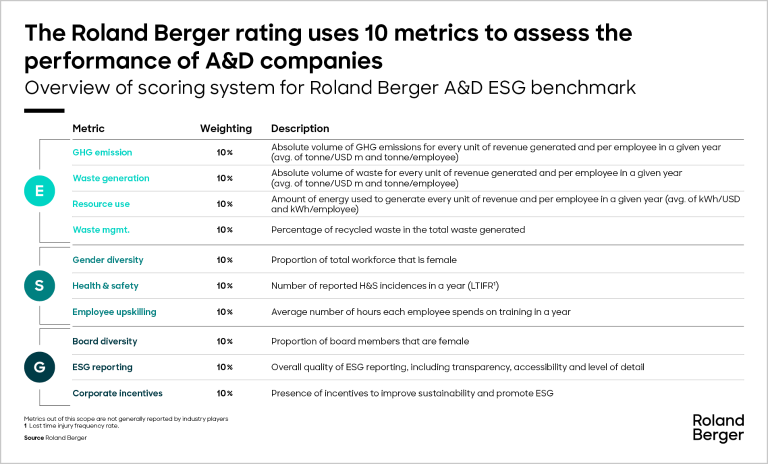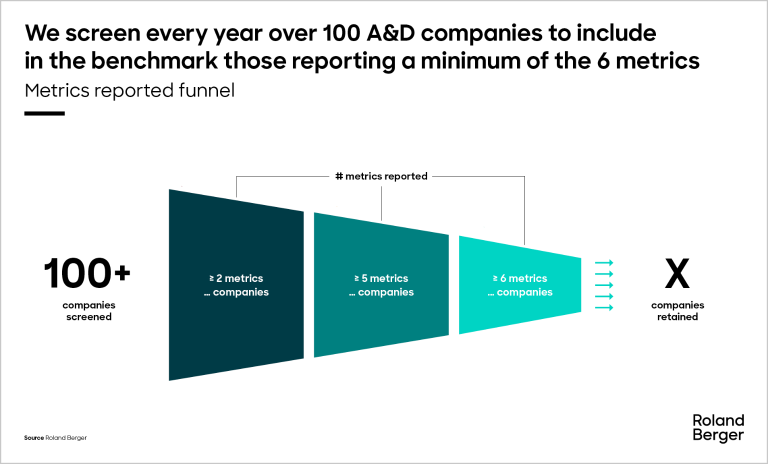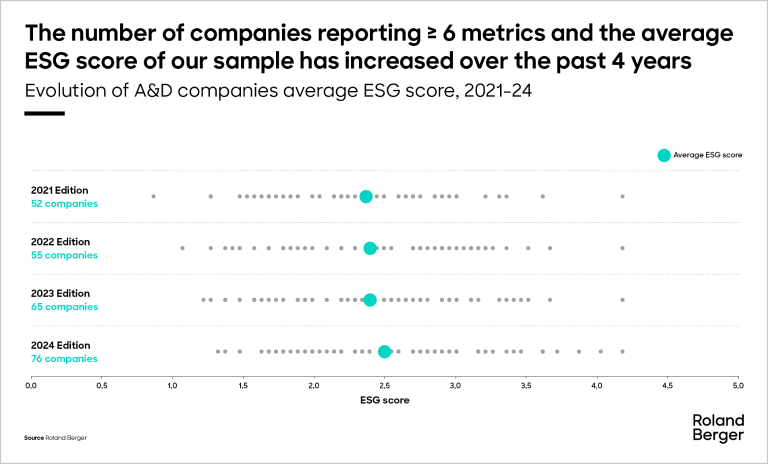The supply chain offers an immediate opportunity for creating a more sustainable aerospace industry. Here’s how to engage with suppliers for effective results.




Environmental, Social, and Governance (ESG) scores have often faced criticism as a transient trend within the corporate landscape, particularly due to the one-size-fits-all approach employed by many rating agencies. These agencies typically apply standardized metrics to evaluate companies across diverse industries, resulting in ratings that may not accurately reflect the unique challenges and opportunities faced by specific sectors.
At Roland Berger, we recognised the pressing need for a more nuanced and sector-specific evaluation of ESG factors, particularly within the Aerospace and Defense (A&D) sector. Over the past four years, we have leveraged our extensive industry expertise and insights to develop a tailored ESG rating system specifically designed for the A&D sector. This is especially valuable in today's environment, where there is a growing scepticism surrounding generic scores that fail to capture the intricacies of specific industries.
To create our unique ESG rating, we follow a structured approach:
We begin by identifying the commonly reported ESG metrics within the A&D sector. This step is crucial as it ensures that our evaluation aligns with established industry standards and reporting practices. By focusing on relevant and widely recognized metrics, we can create a robust framework that accurately reflects the ESG performance of companies in the sector.
To undertake our assessment, we have selected a total of ten key metrics, which include four pertaining to Environmental factors, three related to Social considerations, and three associated with Governance aspects. This balanced approach allows us to comprehensively assess the multifaceted nature of ESG performance within the A&D industry.
Our team meticulously reviews the sustainability reports of over 100 leading A&D companies, concentrating on those that disclose six or more ESG metrics. This analysis allows us to benchmark performance across the industry and identify best practices that can serve as a model for others.
After conducting our ESG benchmark for 4 years we have been able to derive a series of key insights on the ESG performance of the A&D sector:
There has been a rise in ESG reporting, particularly among companies in Europe and North America. Additionally, we are observing an upward trend in reporting from Asian companies, indicating a growing awareness of ESG issues.
Despite the moderate growth in the average ESG score of the sector since the first edition of the benchmark, our results show that companies that report generally achieve a higher rating in 2024 than they did in 2021.
Our data also show variations of ESG performance in organisations depending on the end customer they serve, their position in the supply chain and their home region.
End customer focus: defence companies perform overall slightly better than civil-focused peers, which is due to the stress they have traditionally put of G, given the higher scrutiny to which Defence organisations are subjected. This is evidenced by the recent focus of Ministries of Defence, the closest of all Defence organisations to the general public, in developing ESG strategies (e.g., net-zero strategies). At the same time, in order to access funding in Europe’s sustainability-focused finance ecosystem, Defence companies are facing pressure to show good ESG performance.
Supply chain position: Original Equipment Manufacturers (OEMs) generally outperform Tier 1 and Tier 2+ suppliers in ESG metrics. This is due to the greater proximity of aircraft OEMs to the general public compared to their suppliers. As a reference, airlines , which interface directly with passengers, tend to outperform OEMs in ESG.
Home region: European companies tend to excel in ESG performance compared to their counterparts in other regions. Not surprisingly, this is due to the higher stress that European countries have put in ESG-related regulation (e.g., CSRD reporting requirements). Interestingly, Asian companies show better performance than those in North America, which is due to only the top performers disclosing their metrics, given the more relaxed ESG regulation in the region.
In general, a company’s ESG performance based on reported metrics is a reflection of the external pressure it faces (e.g., scrutiny, regulation), and not a full depiction of its potential to reduce its impact on the environment, increase its positive footprint on society and improve its governance. This means that an organisation can learn best practices shared by current top ESG performers to increase its own performance.
While the days of generic and generally opaque ESG ratings might be counted, at Roland Berger we believe that an ESG benchmark with a sector-specific focus carries the value of identifying best practices from top performers that can be rolled out to the rest of the industry to increase the overall positive impact (not the rating) of the sector.
Would you like to know how your organization ranks in our benchmark? Contact us to find out and learn how to enhance your ESG performance while improving operational efficiency.
We would like to thank Miguel Lopez for co-authoring this article.



